Table of Contents
Introduction
Every dog owner wants their furry companion to look and feel their best, and a shiny, healthy coat is often a sign of a happy, well-cared-for pet.
But what if you’re wondering how to get dog hair to grow faster? Whether your pup’s fur is slow to grow after a trim, thinning in certain spots, or just not as full as you’d like, it’s natural to want to speed up the process.
While there’s no instant fix, there are proven ways to support healthy hair growth. A dog’s coat health is closely tied to their overall well-being, meaning factors like nutrition, grooming, and even stress levels play a role.
Think of it like gardening—you can’t force a plant to grow overnight, but with the right care, you create the best conditions for strong, healthy growth. The same goes for your dog’s fur! A nutrient-rich diet, gentle grooming techniques, and avoiding harsh products can all make a big difference over time.
In this topic, we’ll explore practical steps to naturally promote your dog’s coat growth. With the right approach and a little patience, you’ll likely notice improvements in texture, shine, and length. Let’s dive in!
Why Your Dog’s Fur Might Be Growing Slowly

If you’re wondering how to get dog hair to grow faster, the secret lies in nurturing your pet’s overall health and coat care routine.
Start with a balanced diet rich in protein, omega fatty acids, and vitamins like biotin—nutrients that act as building blocks for strong, healthy fur. Foods like salmon, eggs, or supplements formulated for skin and coat health can work wonders.
Regular grooming is equally important: gentle brushing stimulates blood circulation to hair follicles, encouraging growth while removing dead hair that might clog pores. Avoid over-bathing, as harsh shampoos can strip natural oils that protect and moisturize the skin. Instead, opt for mild, moisturizing products designed for dogs. Stress and underlying health issues, such as allergies or hormonal imbalances, can also slow hair growth, so schedule a vet checkup to rule out hidden problems.
Finally, be patient—hair growth cycles vary by breed and individual, but with consistent care, you’ll create the ideal conditions for a thicker, shinier coat over time. Remember, there’s no overnight fix, but small, thoughtful steps can help your dog’s fur reach its full potential!
If your dog’s fur is taking longer than usual to grow back, there could be several reasons behind it. A healthy coat is a sign of a well-balanced diet, good overall health, and proper care. If your furry friend’s hair isn’t growing as expected, it’s essential to identify the root cause and take appropriate action.
Below, we explore some common factors that might be affecting your dog’s fur growth and how to address them effectively.
Poor Nutrition
Your dog’s diet plays a crucial role in maintaining a healthy coat. Just like humans, dogs require essential nutrients such as proteins, vitamins, and fatty acids to support hair growth. If your pet is not getting enough of these nutrients, their fur may become thin, brittle, or slow to regrow.
What to do?
Ensure your dog’s diet includes high-quality proteins, omega-3 and omega-6 fatty acids, and vitamins like biotin and vitamin E. Foods like salmon, eggs, sweet potatoes, and flaxseeds can help nourish their coat from within. You may also consider consulting a vet for supplements if your dog has specific deficiencies.
Skin Issues
Skin conditions such as allergies, infections, and flea infestations can significantly impact hair growth. If your dog is constantly scratching and has redness or dry patches on their skin, it could be a sign of an underlying problem.
What to do?
Regularly inspect your dog’s skin for any signs of irritation or discomfort. Use hypoallergenic shampoos and keep their bedding clean to prevent flea infestations. If your pet shows persistent symptoms, consult a vet for a proper diagnosis and treatment.
Stress and Anxiety
Just like humans, stress and anxiety can lead to excessive shedding and slow hair regrowth in dogs. Changes in the environment, lack of exercise, separation anxiety, or new pets in the house can all contribute to stress-related fur loss.
What to do?
Make sure your dog gets enough physical activity and mental stimulation. Regular walks, playtime, and positive reinforcement training can help reduce stress. Creating a calm and stable environment will also promote healthier fur growth.
Hormonal Imbalances
Conditions like hypothyroidism or Cushing’s disease can cause fur thinning or slow regrowth. These hormonal imbalances affect the body’s ability to maintain a healthy coat.
What to do?
If you notice additional symptoms like weight gain, lethargy, or frequent infections, consult a vet for a blood test. Medication and dietary adjustments can help manage hormonal conditions and improve coat health.
Final Thoughts
Healthy fur growth in dogs depends on a combination of proper nutrition, skin care, stress management, and overall health. By ensuring your dog gets the right nutrients, regular grooming, and a stress-free environment, you can help speed up their fur regrowth. If the issue persists, seeking professional advice from a veterinarian is always the best approach.
Would you like any specific details added to make it even more engaging?
Tips to Boost Fur Growth Naturally
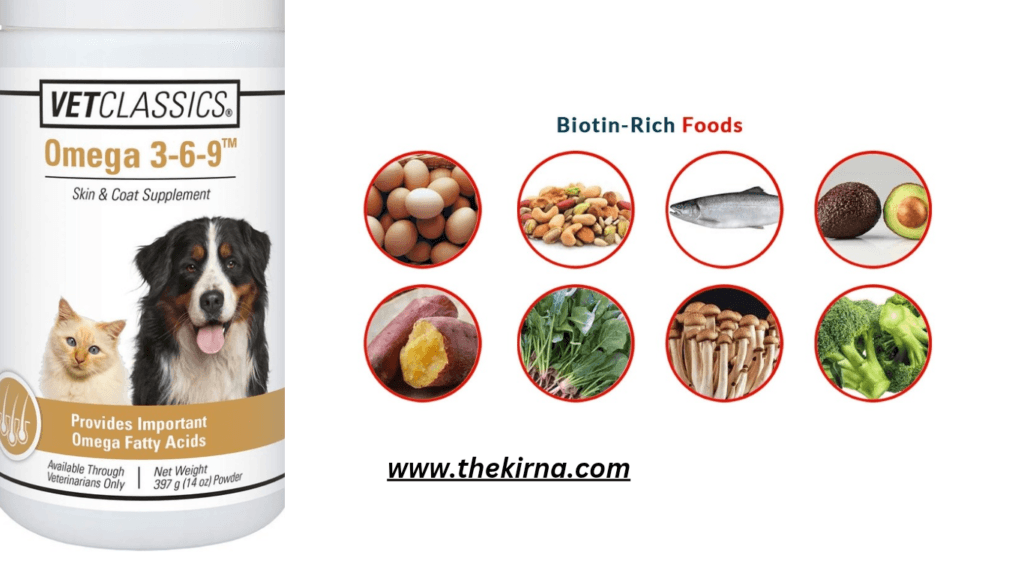
Hair growth in dogs depends on several factors, including diet, grooming habits, overall health, and even stress levels. Let’s explore the most effective ways to enhance your dog’s coat naturally.
Upgrade Their Diet
Just like humans, dogs need a balanced diet for healthy hair growth. A poor diet lacking essential nutrients can lead to brittle, thin fur or excessive shedding. Here’s how you can improve your dog’s nutrition for better coat health:
Feed high-quality dog food with real meat as the first ingredient. Protein is the building block of hair, so opt for premium brands that list chicken, beef, or fish as the primary source of protein.
Incorporate whole foods like eggs, salmon, carrots, and spinach into their diet. Eggs are rich in biotin, salmon provides omega-3 fatty acids, and carrots contain vitamin A—all of which promote fur growth.
Avoid low-quality fillers such as corn, wheat, and soy, which offer little to no nutritional benefits and may even cause allergies or skin issues that slow down hair growth.
A nutrient-dense diet lays the foundation for a thick, shiny coat, making this one of the most crucial steps in improving our health.
Try Supplements (Vet-Approved!)
Sometimes, even a great diet isn’t enough, and supplements can provide the extra boost needed for optimal hair growth. Before giving any supplement, always consult your vet to ensure proper dosage and safety. Some of the best options include:
Omega-3 and Omega-6 fatty acids: Found in fish oil and flaxseed oil, these promote a glossy, strong coat while reducing inflammation that may cause hair loss.
Biotin (Vitamin B7): A key nutrient for hair and nail strength, biotin helps improve the quality and speed of hair growth in dogs.
Zinc and Vitamin E: These vitamins support skin health, preventing dryness and irritation that can slow fur growth.
Adding the right supplements can accelerate the regrowth of healthy fur, especially for dogs recovering from shedding issues or skin problems.
Brush Regularly
Brushing your dog’s coat is more than just a grooming routine—it stimulates blood circulation, which nourishes hair follicles and encourages growth. Here’s how to do it right:
Use the right brush: A soft-bristle brush works well for short-haired breeds, while a slicker brush is best for long-haired dogs.
Brush daily or at least a few times a week to remove dead hair, distribute natural oils, and promote new growth.
Be gentle! Brushing too harshly can damage the skin and cause more hair loss.
This simple habit not only keeps your dog looking great but also significantly improves fur regrowth over time.
Coconut Oil Magic
Coconut oil isn’t just for cooking—it’s a fantastic natural remedy for a dry, dull coat. When applied correctly, it can enhance hair growth and prevent skin irritation.
Massage a small amount into your dog’s skin 1-2 times per week. This helps moisturize dry patches and soothe itching that might lead to excessive scratching and hair loss.
Let it sit for 5-10 minutes before rinsing or wiping off any excess oil.
For optimal results, choose virgin and unrefined coconut oil.
Regular use of coconut oil can improve skin hydration, making hair healthier and less prone to breakage.
Bathe Less, Condition More
Many dog owners unknowingly harm their pets’ coats by bathing them too often. Frequent washing strips away natural oils, leading to dry, brittle fur that doesn’t grow well. Here’s how to balance cleanliness with coat health:
Limit baths to once a month (or as needed) using a gentle, oatmeal-based shampoo.
Use a dog-safe conditioner after each bath to restore moisture and prevent hair breakage.
If your dog gets dirty often, try dry shampoo or spot cleaning with a damp cloth instead of full baths.
By reducing unnecessary baths and incorporating conditioning treatments, you’ll help maintain a healthier environment for hair growth.
Reduce Stress
Stress affects dogs just like it does humans, and high-stress levels can contribute to hair loss. A relaxed, happy dog is more likely to have a healthy coat.
Here’s how to keep stress at bay Ensure daily exercise with walks, playtime, and engaging activities to release pent-up energy. Providing mental stimulation through Puzzle toys, obedience training, and interactive games are great ways to engage dogs and keep them mentally stimulated.
Give plenty of affection and bonding time—cuddling and gentle petting help lower cortisol levels (the stress hormone). If your dog is anxious due to environmental factors, consider creating a calm, predictable routine to make them feel more secure.
Check for Health Problems
If your dog’s hair growth is unusually slow or they’re shedding excessively, it could be a sign of an underlying health issue. Some common medical conditions that affect fur growth include:
Hypothyroidism: A low thyroid function can cause thinning hair, flaky skin, and lethargy.
Allergies: Food or environmental allergies can lead to itching, irritation, and hair loss.
Parasites: Fleas, mites, and ringworm infections can damage the skin and stunt hair growth.
If you’ve tried all the above tips and see no improvement, schedule a vet visit to rule out any health concerns. The sooner you address any medical issues, the faster your dog’s coat will recover.
How to get dog hair to grow faster DIY Home Remedies for Faster Growth
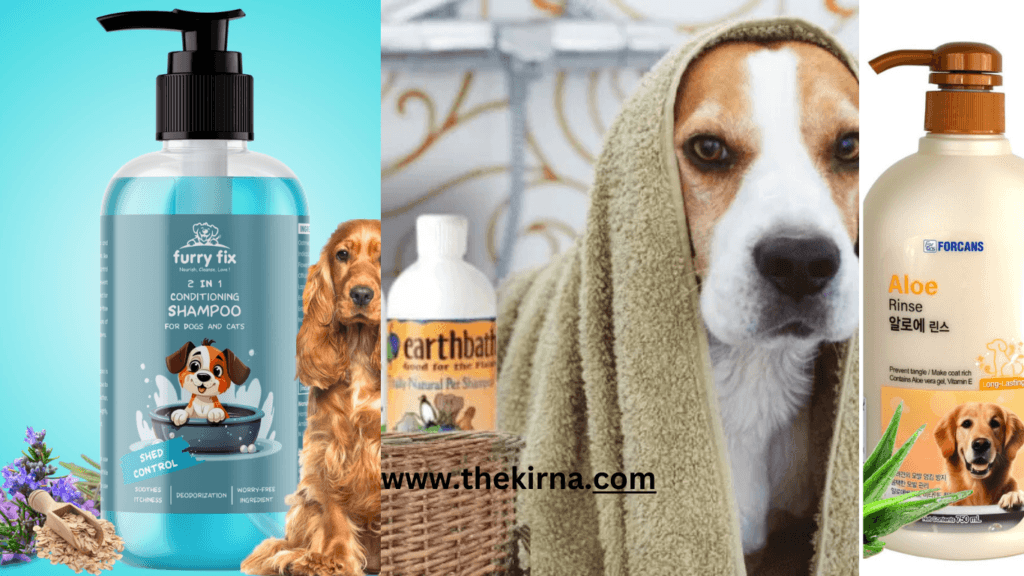
How to get dog hair to grow faster, I will tell you three ways for this.
Aloe Vera Gel: Nature’s Skin Healer
Aloe vera isn’t just for sunburns—it’s a powerhouse for dogs’ skin and coat health too! The gel from this succulent plant contains vitamins, minerals, and enzymes that moisturize dry skin, reduce itching, and create a healthy foundation for hair follicles to thrive. When applied topically, aloe vera’s anti-inflammatory properties calm irritated areas (like hot spots or rashes) that might be hindering hair growth. It also promotes cell regeneration, which speeds up the healing of damaged skin and encourages new fur growth.
How to Use It:
- Extract fresh gel from an aloe leaf (avoid store-bought versions with additives or alcohol).
- Apply a thin layer directly to problem areas, gently massaging it into the skin.
- Let it stay for 10 to 15 minutes, then wash off with warm water.
- For optimal results, use two to three times a week.
Pro Tip: For dogs with sensitive skin, do a patch test first. If your pup tries to lick the gel, distract them with a toy until it dries—aloe is safe if ingested in small amounts but can cause mild stomach upset.
Oatmeal Rinse: Soothe & Strengthen the Skin Barrier
Oatmeal is a classic remedy for itchy, inflamed skin—and for good reason! Colloidal oatmeal (finely ground oats) contains antioxidants and compounds called avenanthramides that reduce redness, calm irritation, and lock in moisture.
By soothing the skin, this rinse removes obstacles like scratching or inflammation that can slow hair growth. Plus, oatmeal’s gentle exfoliation clears dead skin cells, unclogging pores and allowing new hair to sprout.
How to Use It:
- Blend ½ cup plain, unflavored oats into a fine powder.
- Mix with 2 cups warm water and let it steep for 10 minutes.
- Strain the mixture through a cheesecloth or sieve to remove chunks.
- After shampooing, pour the milky liquid over your dog’s coat, avoiding the eyes.
- Massage for 5 minutes, then rinse thoroughly.
- Use once a week for irritated or flaky skin.
Bonus Benefit: Oatmeal’s moisturizing properties leave fur soft and shiny!
Green Tea Spray: Fight Inflammation, Boost Follicles
Green tea isn’t just a healthy drink—it’s a secret weapon for your dog’s coat! Packed with polyphenols and antioxidants, this brew reduces inflammation, fights bacterial imbalances on the skin, and may even stimulate hair follicles.
A diluted green tea rinse can help balance oil production, preventing clogged pores that stifle hair growth. It’s especially useful for dogs prone to allergies or fungal infections.
How to Use It:
- Brew 1 cup of organic green tea (avoid caffeinated varieties if your dog is sensitive).
- Allow it to cool fully before pouring it into a spray bottle.
- Spritz lightly onto thinning areas or across the coat after bathing.
- Gently pat with a towel—no need to rinse.
- Apply two to three times per week for upkeep.
Safety Note: Never use hot tea, and avoid the spray if your dog has open wounds.
Supporting Long-Term Coat Health
While these remedies can kickstart hair growth, remember that lasting results depend on holistic care:
Nutrition: Ensure your dog’s diet includes omega- 3 fatty acids (fish oil, flaxseed) and biotin-rich foods (eggs, sweet potatoes).
Grooming: Regular brushing improves blood circulation to the skin and distributes natural oils.
Stress Management: Anxiety can trigger excessive shedding—create a calm environment with plenty of exercise.
Vet Checkups:Rule out underlying issues like hormonal imbalances or parasites.
Patience is key! Hair growth cycles take time, but with consistent care, you’ll likely notice softer, thicker fur within a few weeks. Always monitor your dog’s reaction to new treatments, and consult your vet if irritation persists. By combining these natural remedies with love and attention, you’re not just growing hair—you’re nurturing a happier, healthier pup!
Mistakes That Damage Your Dog’s Coat
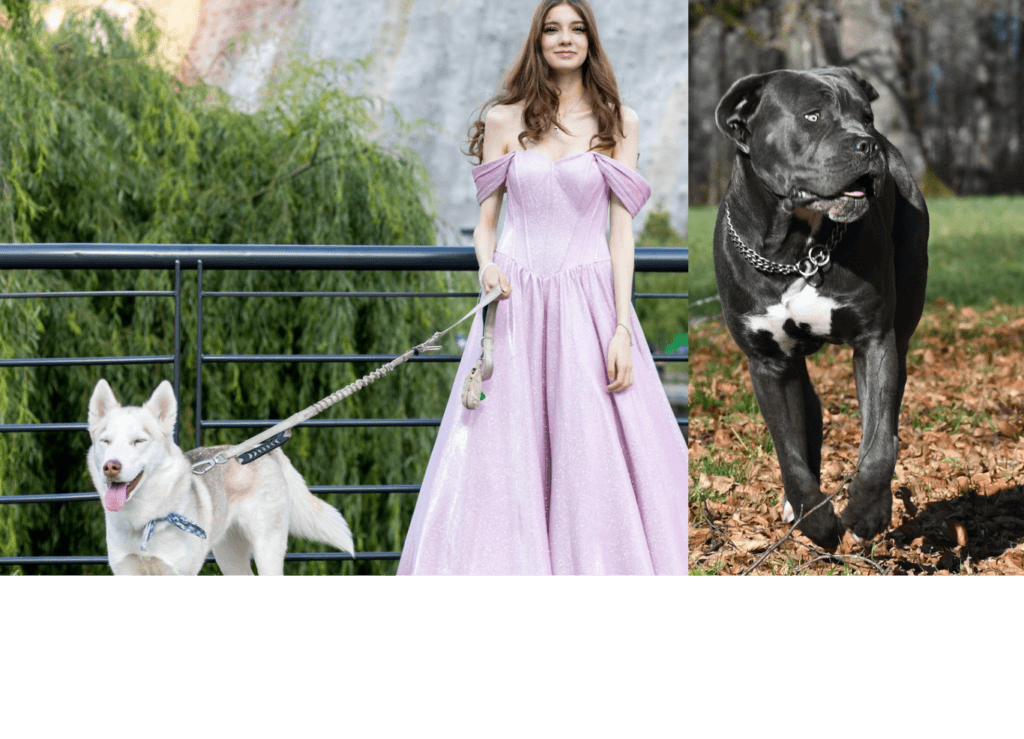
Wanting your dog’s fur to grow faster? While genetics and breed play a big role, certain everyday mistakes can sabotage hair growth and leave your pup’s coat looking thin or patchy.
Avoiding these common errors isn’t just about aesthetics—it’s about keeping their skin and fur healthy enough to support steady, strong growth. Let’s break down three habits that might be slowing things down.
First up: shaving your dog too often. Many pet parents believe shaving will make fur grow back thicker or faster, but this is a myth. A dog’s coat acts as a natural insulator, protecting them from sunburn, temperature swings, and skin irritation.
Shaving—especially double-coated breeds like Huskies or Golden Retrievers—can disrupt their hair growth cycle, leading to uneven regrowth or even permanent damage to the follicles. Instead of shaving, opt for regular trimming to manage shedding without stripping their natural defenses.
Next, harsh brushing techniques can do more harm than good. Tugging through tangles with the wrong tools (like cheap plastic brushes or fine-toothed combs) creates split ends and breaks fragile hairs.
Always use a brush suited for your dog’s coat type—slicker brushes for long hair, bristle brushes for short coats—and be gentle. Start at the tips of the fur and work upward to avoid pulling on the roots. For stubborn mats, a detangling spray or a visit to a professional groomer is safer than forcing the brush through.
Finally, ignoring allergies or skin issues is a fast track to a damaged coat. Constant scratching, licking, or chewing doesn’t just irritate the skin—it weakens hair shafts and leads to bald spots.
Allergies (food, environmental, or flea-related) are often the culprit. If your dog seems itchy, consult your vet to identify the root cause. Treatments like hypoallergenic diets, medicated shampoos, or antihistamines can soothe their skin, reduce scratching, and let their coat thrive.
By steering clear of these mistakes, you’ll create the ideal conditions for healthy, resilient fur to grow. Remember: a little patience and the right care go a long way!
How Long Does It Take to See Results?
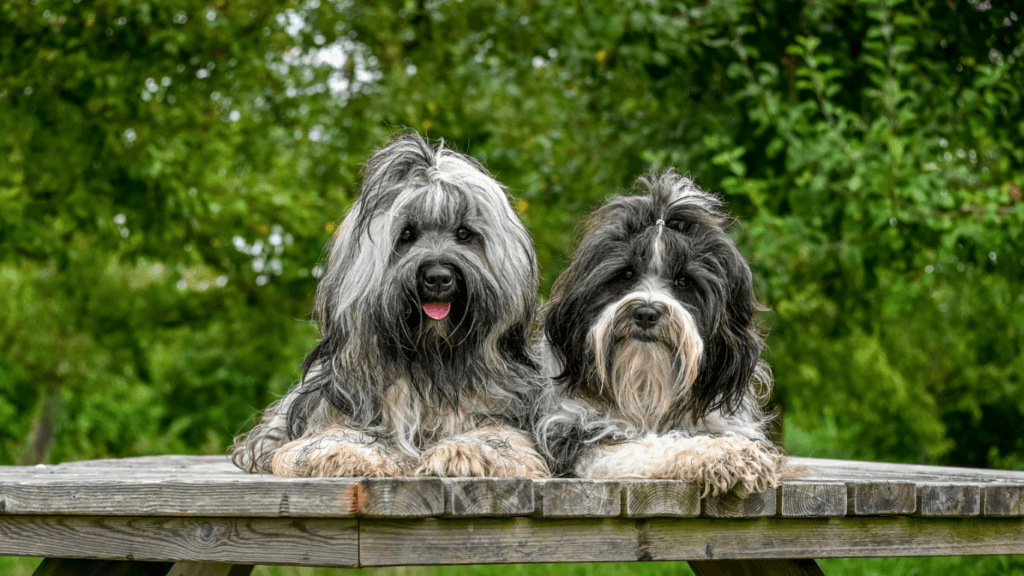
If you’re trying to help your dog’s fur grow faster, you’re probably eager to see changes right away. But just like human hair, dog fur follows its own natural growth cycle, and rushing it isn’t realistic. The good news? With patience and consistent care, you can make a difference—it just takes time.
On average, dog hair grows about ½ to 1 inch per month, depending on the breed, age, and overall health of your pup. This means you won’t wake up to a dramatically fluffier coat overnight. However, if you stick to a solid routine—think proper nutrition, regular grooming, and stress-free living—you’ll likely start noticing subtle improvements within 3–6 months. Let’s break this down:
For the first month, focus on laying the groundwork. A high-quality diet rich in proteins, omega-3 fatty acids (found in fish oil or eggs), and vitamins like biotin can kickstart healthier follicles. Regular brushing also helps by stimulating blood flow to the skin. But don’t expect miracles yet—this phase is about setting the stage.
By the 3-month mark, you should see visible changes. Thinner patches might fill in, and the coat could look shinier or softer to the touch. This is when consistency pays off. Skipping meals, neglecting grooming, or exposing your dog to stressors like harsh weather can slow progress, so stay disciplined.
Around 6 months, the results become even clearer. If your dog had shorter fur due to trimming or shedding, you’ll notice it reaching a fuller, healthier length. Breeds with longer hair, like Golden Retrievers or Collies, may take closer to 6 months to show significant growth, while short-haired dogs might hit their stride sooner.
But remember, every dog is unique. Older dogs or those with health issues (like thyroid imbalances or skin allergies) might need extra time or vet guidance. Regular check-ups ensure underlying problems aren’t sabotaging your efforts.
The key takeaway? Healthy fur growth is a marathon, not a sprint. Avoid quick fixes like over-bathing or sketchy supplements—they often backfire. Instead, celebrate small wins: a softer coat, fewer tangles, or that “glow” your pup starts to develop.
Trust the process, stay consistent, and give your dog the love (and treats!) they deserve along the way. Before you know it, you’ll look back and realize how far that coat has come!
Read this Also
Should I get a dog or cat? Here’s How to Know Which One’s Right for You
Does My Dog Love Me? 10 Clear Signs to Look For
FAQ
can i use human hair products on my dog?
Using human hair products on dogs isn’t recommended. While it might seem convenient, dogs have different biological needs compared to humans.
Their skin has a higher pH level (around 6.2–7.4) compared to human skin (5.5–6.5). Human shampoos or conditioners, formulated for lower pH, can disrupt a dog’s natural skin barrier, leading to dryness, irritation, or even infections. Ingredients like sulfates, parabens, or artificial fragrances in human products can strip natural oils from a dog’s coat, causing itchiness or allergic reactions.
Some human products contain chemicals toxic to dogs. For example, tea tree oil, common in dandruff shampoos, is harmful if ingested or absorbed through a dog’s skin. Similarly, salicylic acid or zinc pyrithione, found in anti-dandruff formulas, may cause poisoning in high doses.
Dogs also groom themselves by licking, increasing the risk of ingesting residual product.
Dog-specific products are designed to address their unique needs, such as sensitive skin, flea prevention, or coat hydration. They avoid harsh detergents and include safer, pet-friendly ingredients. In emergencies, a one-time use of mild, unscented baby shampoo (pH-neutral) might be acceptable, but regular use isn’t advised.
Always consult a veterinarian before experimenting with human products—they can recommend alternatives tailored to your dog’s breed, skin type, or health conditions. Prioritizing pet-safe options ensures your dog’s coat stays healthy without compromising their well-being.
how to get dog hair to grow faster?
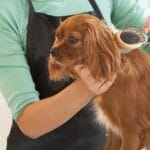
To help your dog’s hair grow faster, focus on a balanced diet rich in protein, omega-3, and omega-6 fatty acids—think fish, eggs, or supplements like fish oil. Regular brushing boosts circulation and spreads natural oils, promoting growth.
Avoid over-bathing (use gentle shampoos) to prevent drying their skin. Keep stress low with exercise and mental stimulation, as anxiety can slow growth. Check for health issues like fleas, allergies, or hormonal imbalances—consult a vet if hair loss persists.
Patience is key, as fur growth takes time, but these steps create the best conditions for a healthy coat
Is rice good for dogs?

Yes, plain boiled rice is usually safe for dogs. In fact, veterinarians often recommend bland diets—including boiled chicken and white rice—for dogs recovering from digestive upset, such as diarrhea or vomiting. Rice is gentle on the stomach, easy to digest, and provides quick energy. However, not all types of rice are equal, and portion control matters to avoid overloading your dog with carbohydrates.
Types of Rice: Which Is Best?
White Rice: This is the most commonly recommended type for dogs with tummy troubles. It’s low in fiber, which helps settle an irritated digestive system. The simplicity of white rice makes it a go-to option for short-term use.
Brown Rice: While brown rice is richer in nutrients like fiber, vitamins, and minerals, it’s harder to digest. It’s better suited for healthy dogs without sensitive stomachs. Introduce it gradually to avoid gas or bloating.
Avoid
seasoned or flavored rice (e.g., garlic, onion, salt, or butter), as additives can harm dogs. Always serve plain, cooked rice.
Benefits of Rice for Dogs
Easy Digestion: White rice’s bland nature soothes upset stomachs and helps firm up loose stools.
Energy Boost: As a carbohydrate, rice provides quick energy, which is helpful for active dogs or those needing calories during recovery.
Hypoallergenic: Rice is less likely to trigger allergies compared to wheat or corn, making it a safe option for dogs with food sensitivities.
Affordable & Accessible: It’s a budget-friendly way to bulk up meals or transition dogs to new foods.
Potential Risks to Watch For
Weight Gain: Overfeeding rice can lead to obesity, as excess carbs turn into fat. Rice should never make up more than 10–25% of a dog’s meal.
Nutritional Imbalance: Rice lacks the protein, fats, and essential nutrients dogs need. It should always be paired with a protein source (e.g., lean chicken, turkey) and veggies for a balanced meal.
Blood Sugar Spikes: Dogs with diabetes or obesity may need limited rice intake due to its high glycemic index. Consult your vet first.
Digestive Issues with Brown Rice: The higher fiber content can cause gas or constipation in some dogs.
How to Serve Rice Safely
Cook It Plain: Boil rice in water without salt, oil, or spices. Ensure it’s fully cooked (soft texture).
Mix with Protein: Combine rice with boiled lean meat (25% rice, 75% protein + veggies) for balanced nutrition.
Moderation Is Key: Use rice as a supplement, not a staple. For small dogs, 1–2 tablespoons per meal; larger dogs can have ¼–½ cup.
Cool Before Serving: Avoid burning your dog’s mouth—let it reach room temperature.
When to Avoid Rice
While rice is safe for most dogs, avoid it if:
Your dog has a grain allergy (rare but possible).
They have a medical condition like diabetes (unless approved by a vet).
They’re prone to pancreatitis (high-carb diets may not be ideal).
Final Tips
Always consult your vet before making dietary changes, especially if your dog has health issues. Rice is a helpful tool for short-term recovery or occasional meals, but dogs thrive on protein-rich diets. Pair it wisely with other ingredients, and your pup can enjoy the benefits without risks.
In short, rice is a safe, temporary fix or supplement for dogs—just keep it simple, balanced, and vet-approved!
How can I make my dogs hair longer?

Helping your dog’s coat grow longer and healthier starts with understanding their unique needs. While genetics play a big role (some breeds simply won’t grow super-long hair), these tips can maximize their natural potential while keeping their coat strong and shiny:
Focus on Nutrition
A balanced diet rich in protein, omega-3, and omega-6 fatty acids is key for healthy fur.
Look for high-quality dog foods with ingredients like salmon, flaxseed, or chicken. Supplements like fish oil (approved by your vet) can boost skin and coat health. Always ensure fresh water is available, as hydration impacts hair growth.
Gentle Grooming Habits
Brush your dog daily with a soft-bristle brush or comb suited to their coat type. This removes tangles, stimulates blood flow to hair follicles, and spreads natural oils that protect the fur. Avoid harsh brushing, which can damage hair. For curly or thick coats, use a detangling spray to prevent breakage.
Bathe Mindfully
Overwashing strips natural oils, leading to dry, brittle hair. Bathe your dog every 4–6 weeks using a mild, moisturizing shampoo. Always rinse thoroughly and dry their coat completely to avoid mats. After baths, a leave-in conditioner (pet-safe) can add extra softness.
Health Check-Ups
Underlying issues like allergies, parasites, or hormonal imbalances can stunt hair growth. Schedule regular vet visits to rule out problems. Flea prevention is crucial, as scratching from bites can damage fur.
Avoid Stress
Stress or anxiety can cause excessive shedding. Create a calm environment with plenty of exercise, mental stimulation, and affection. A happy dog often has a healthier coat!
Trim Strategically
While trimming won’t make hair grow faster, removing split ends prevents breakage. Ask your groomer for light trims to maintain length while keeping the coat neat.
Patience Is Key
Hair grows slowly—about ½ inch per month on average. Focus on overall coat health rather than rushing results. For breeds not genetically inclined to long hair (e.g., Labradors or Boxers), embrace their natural look while keeping their coat glossy.
Always prioritize your dog’s comfort. If you’re unsure about products or routines, consult a vet or professional groomer for personalized advice!


1 thought on “Get Ready for a Luscious Coat: how to get dog hair to grow faster”